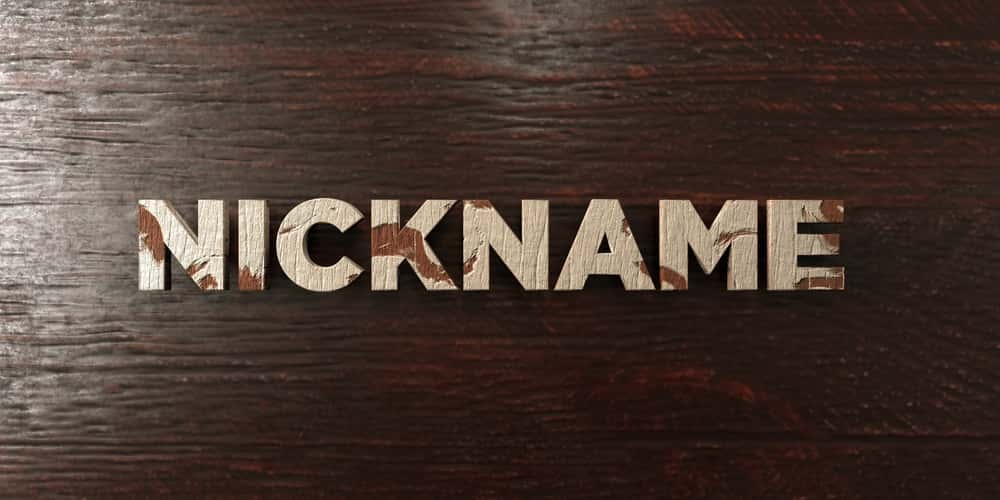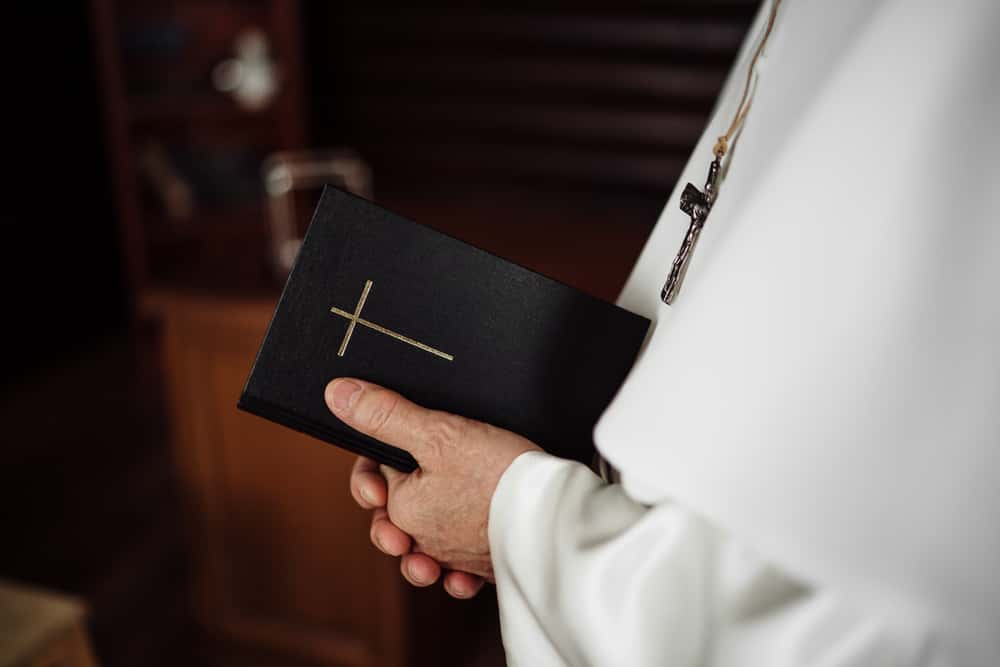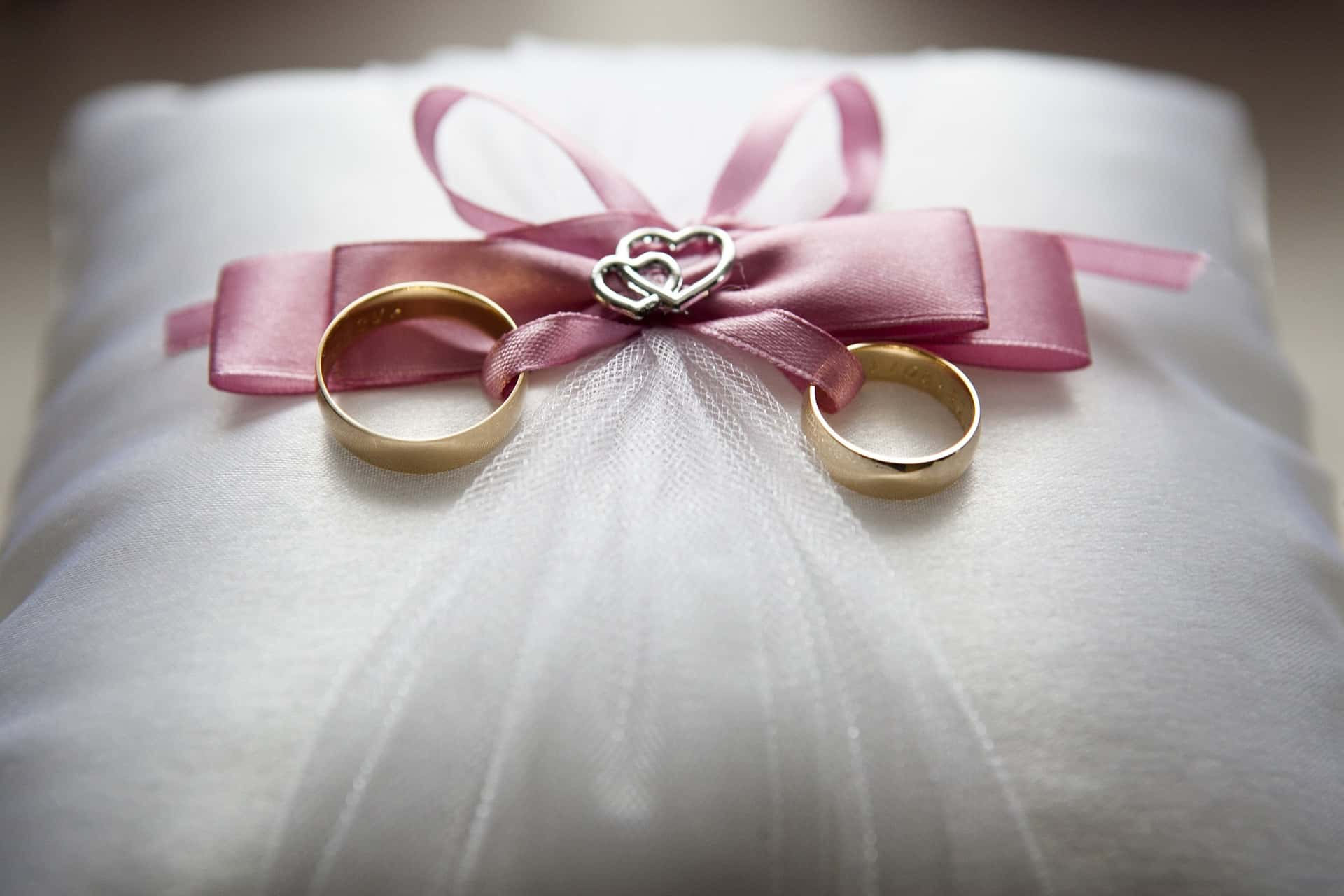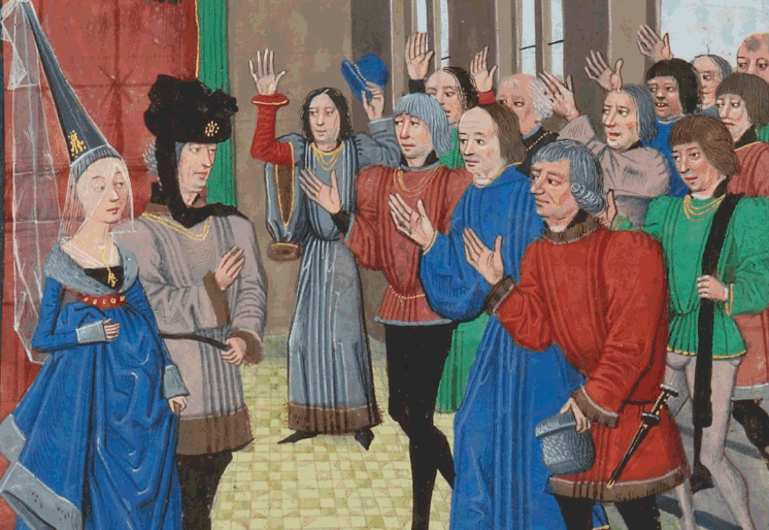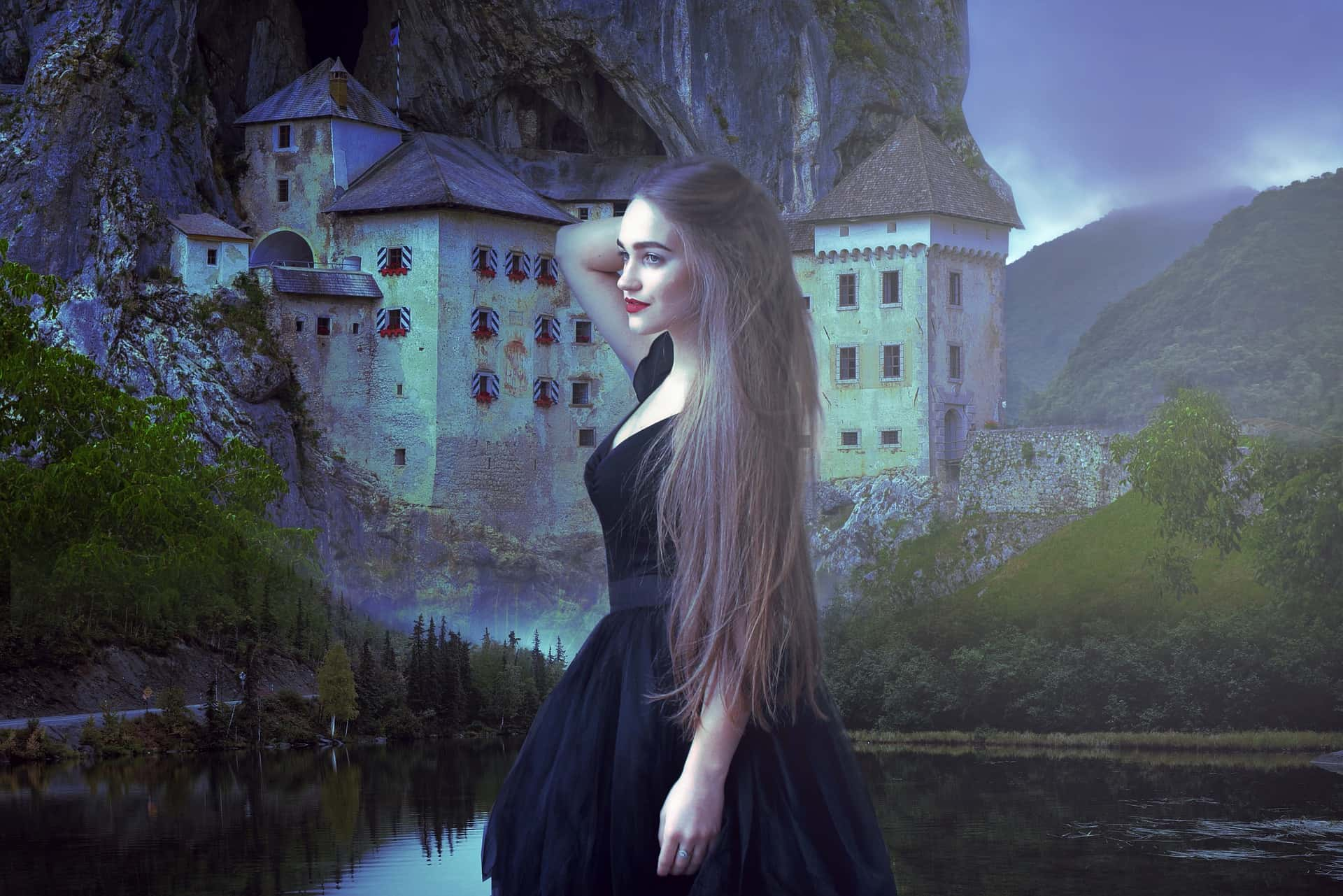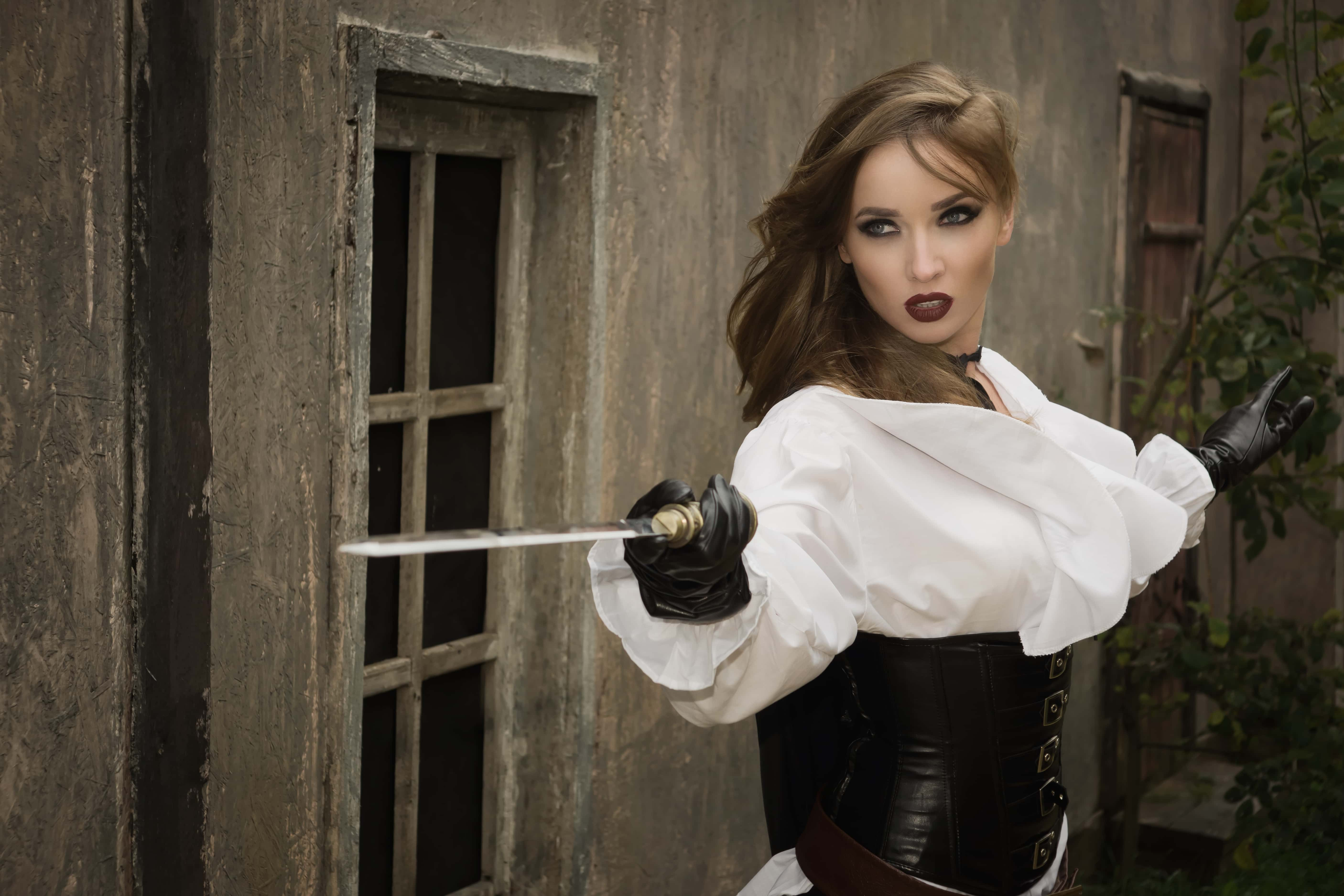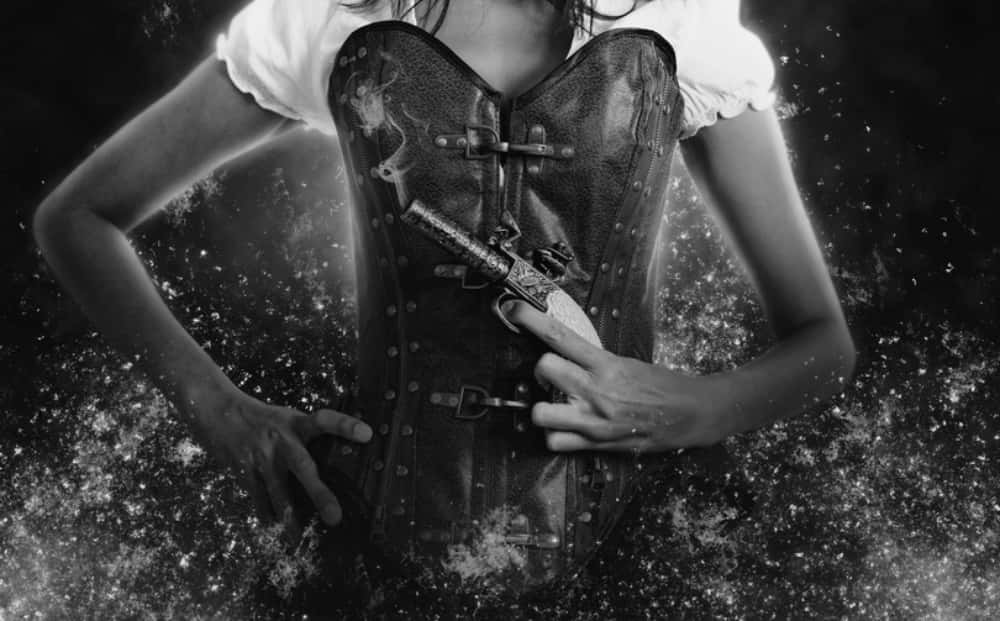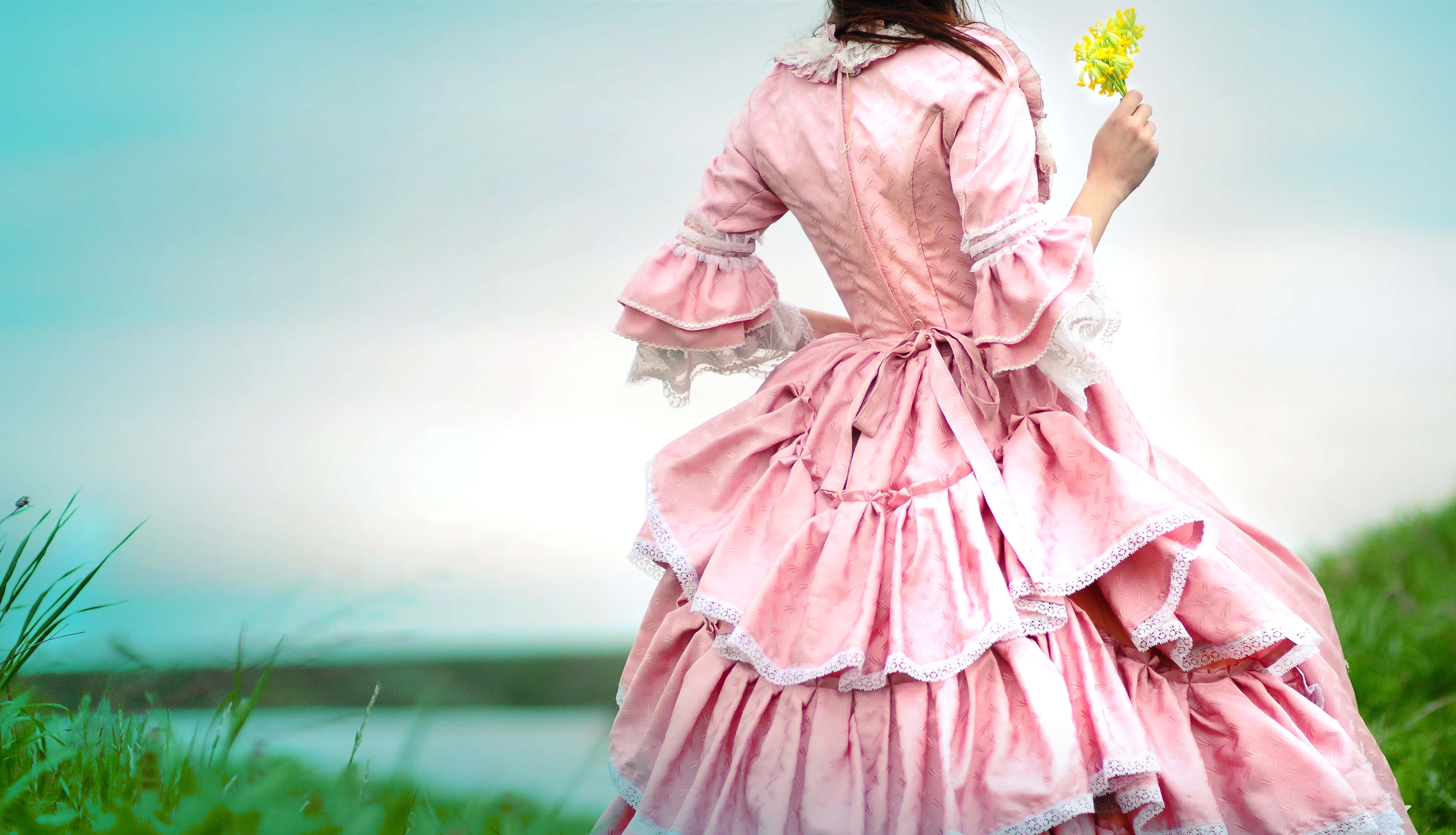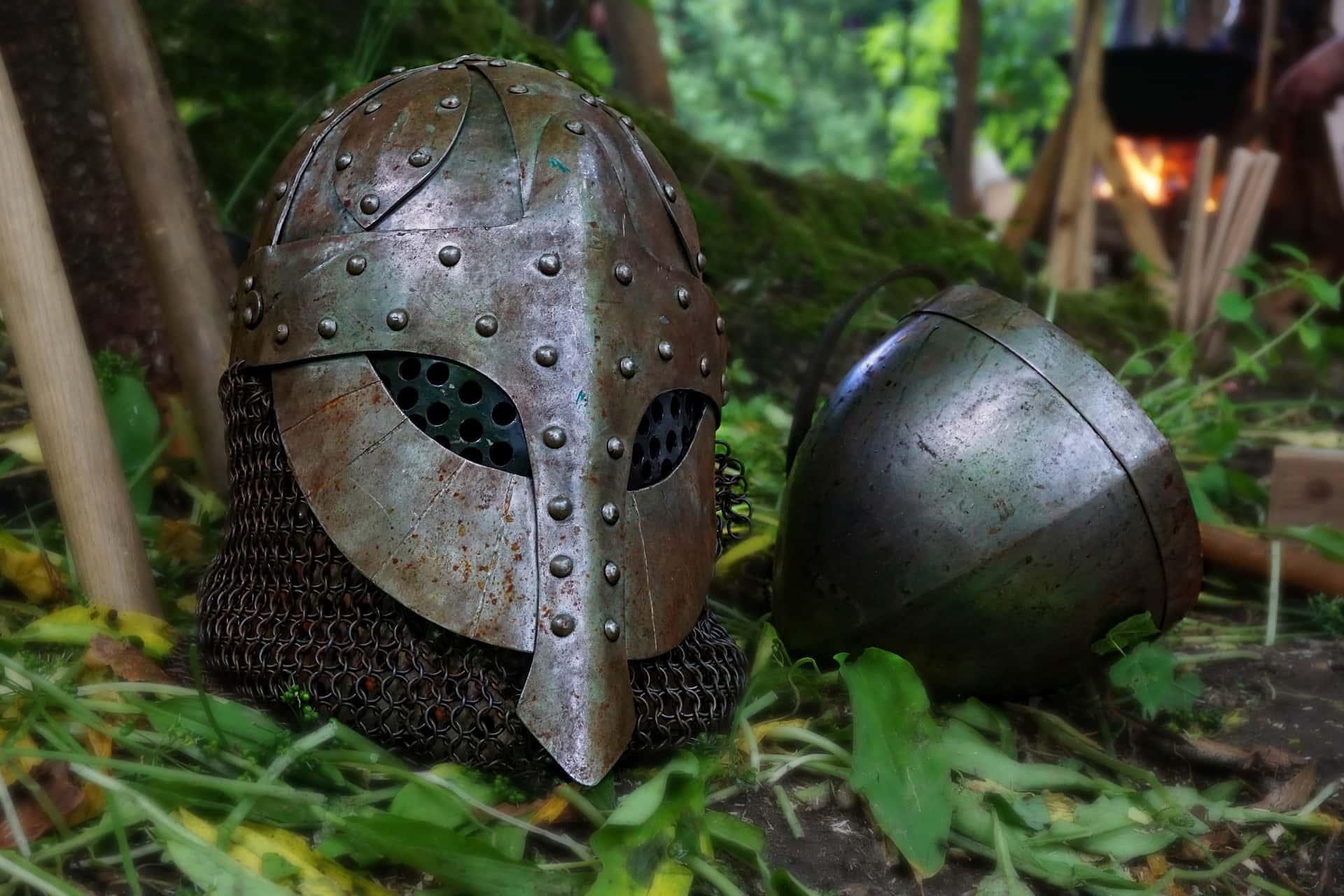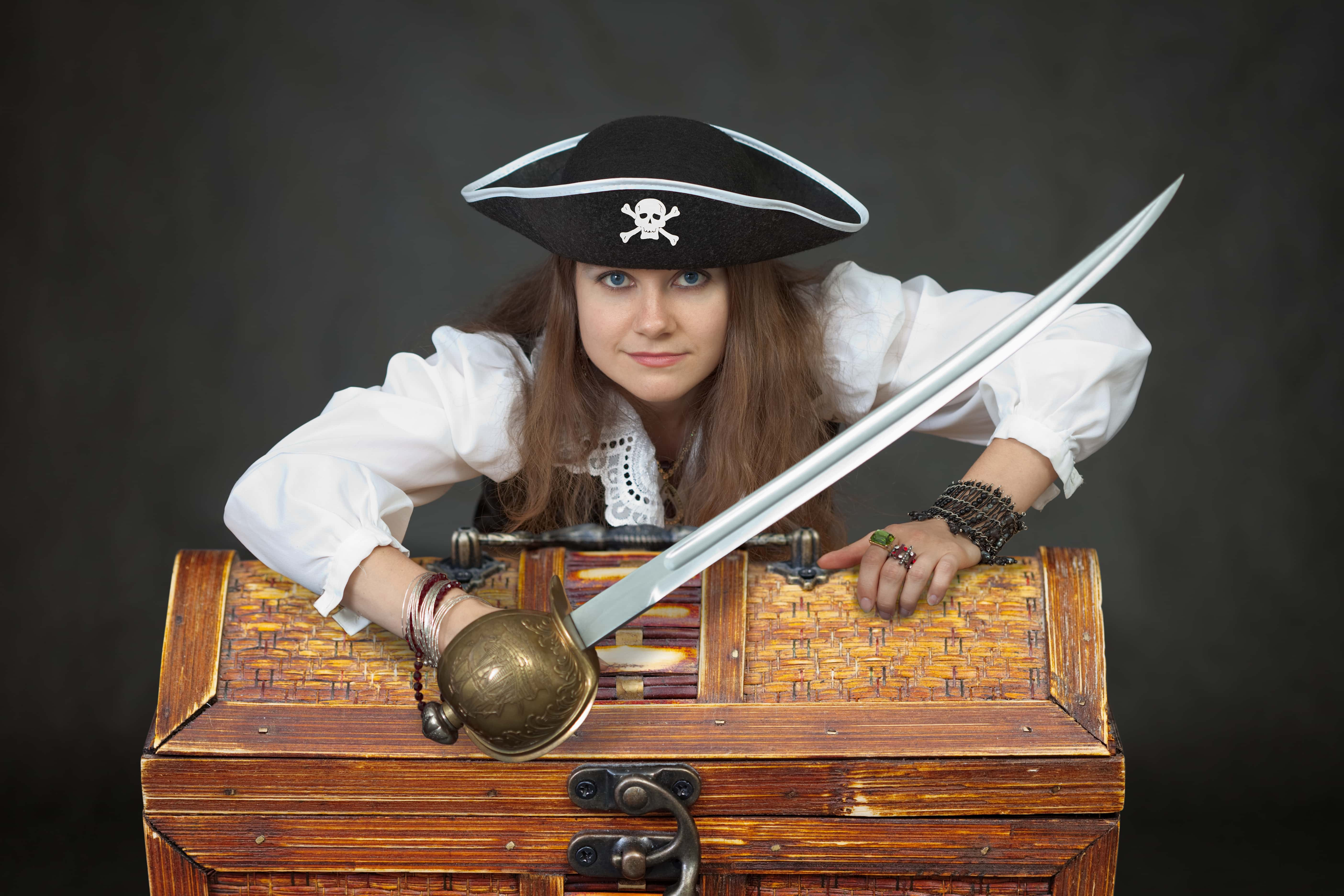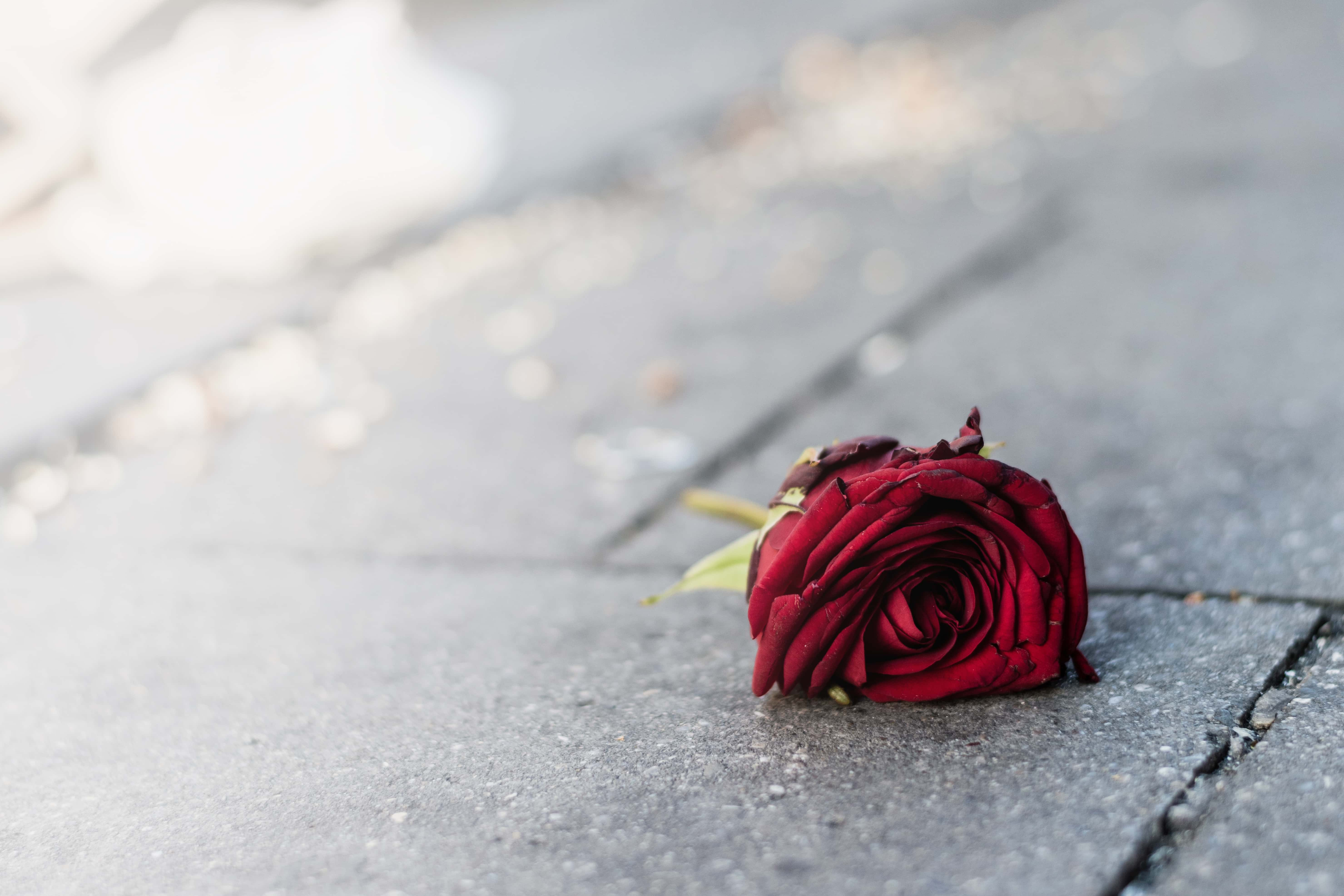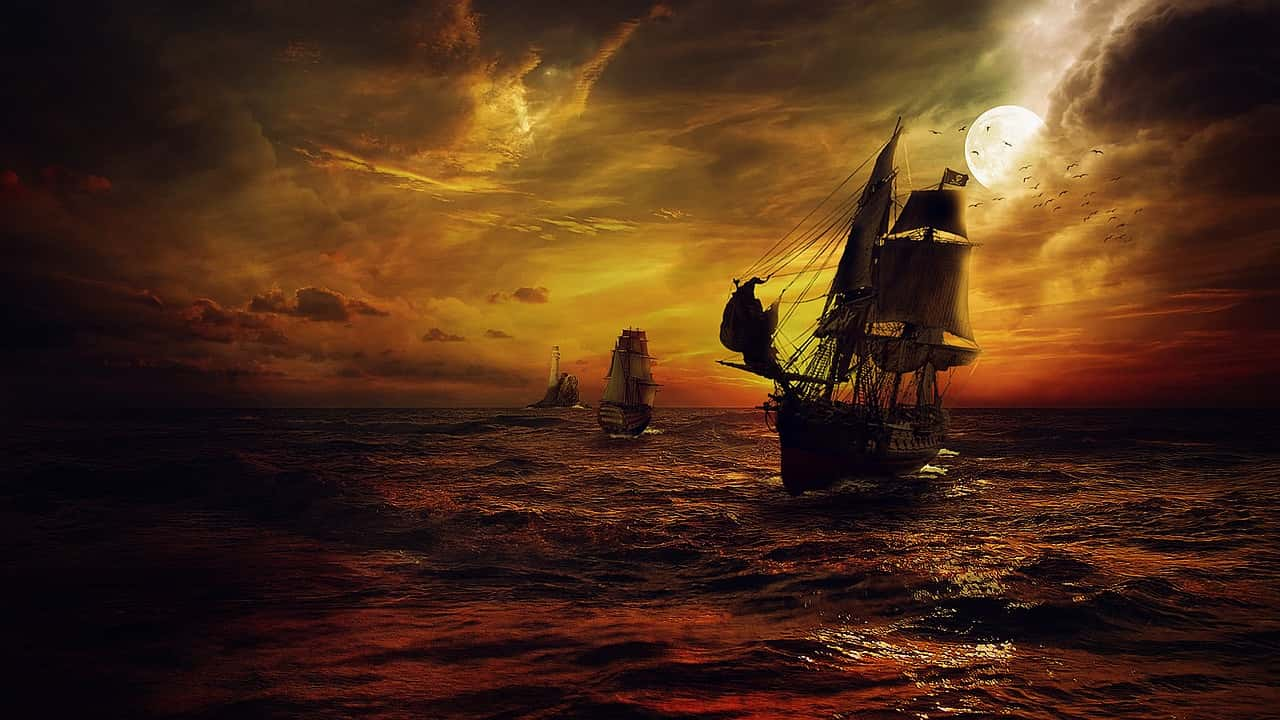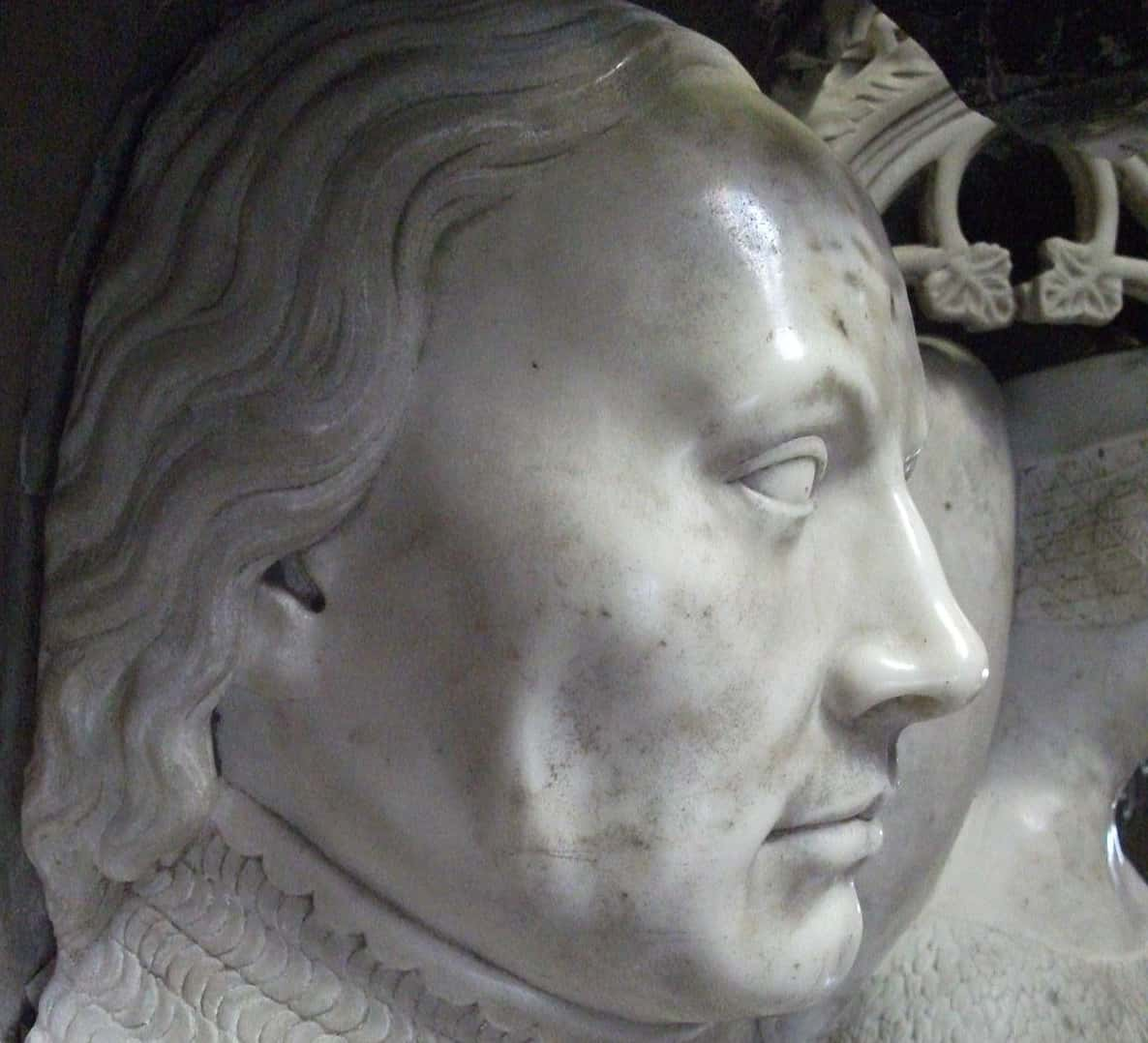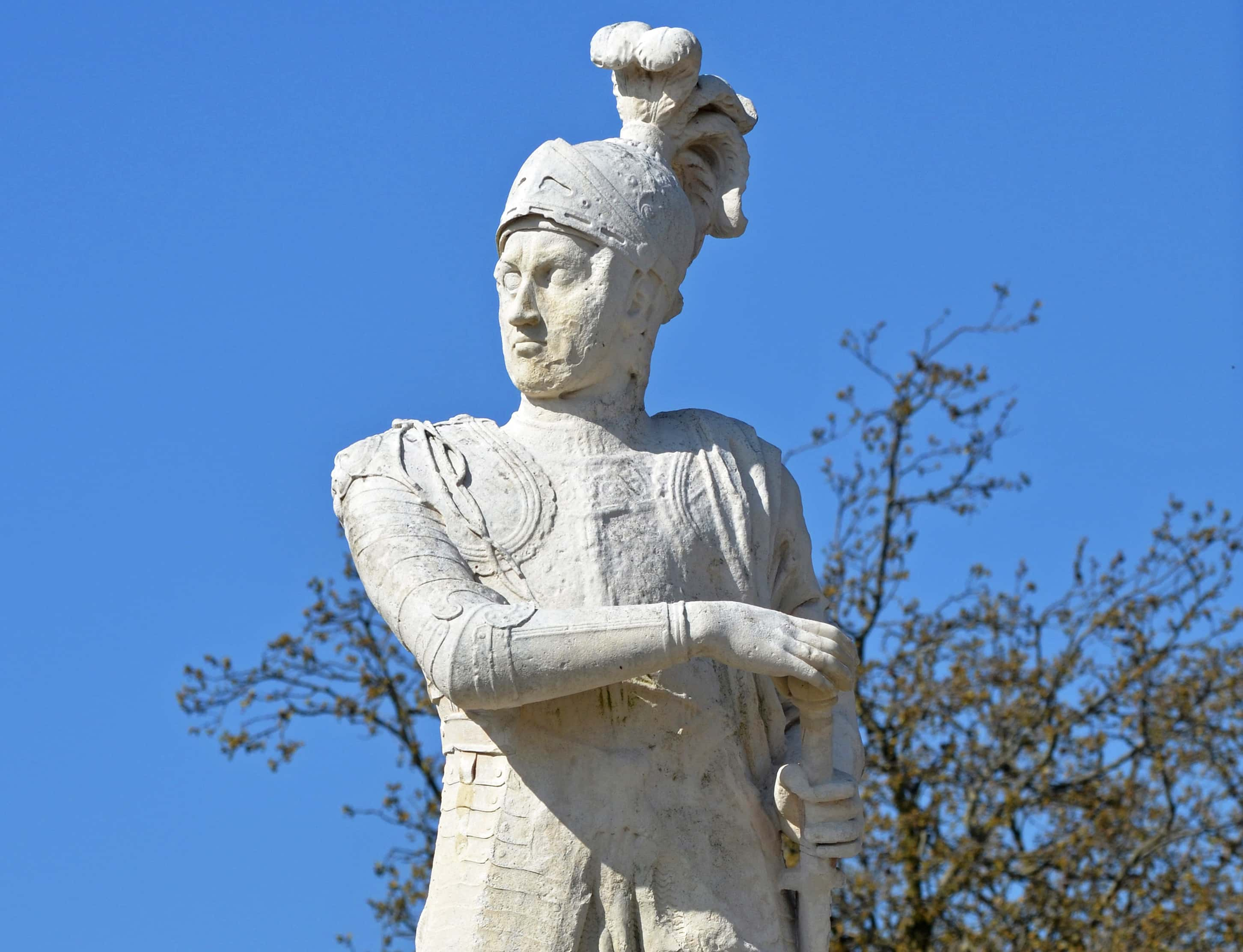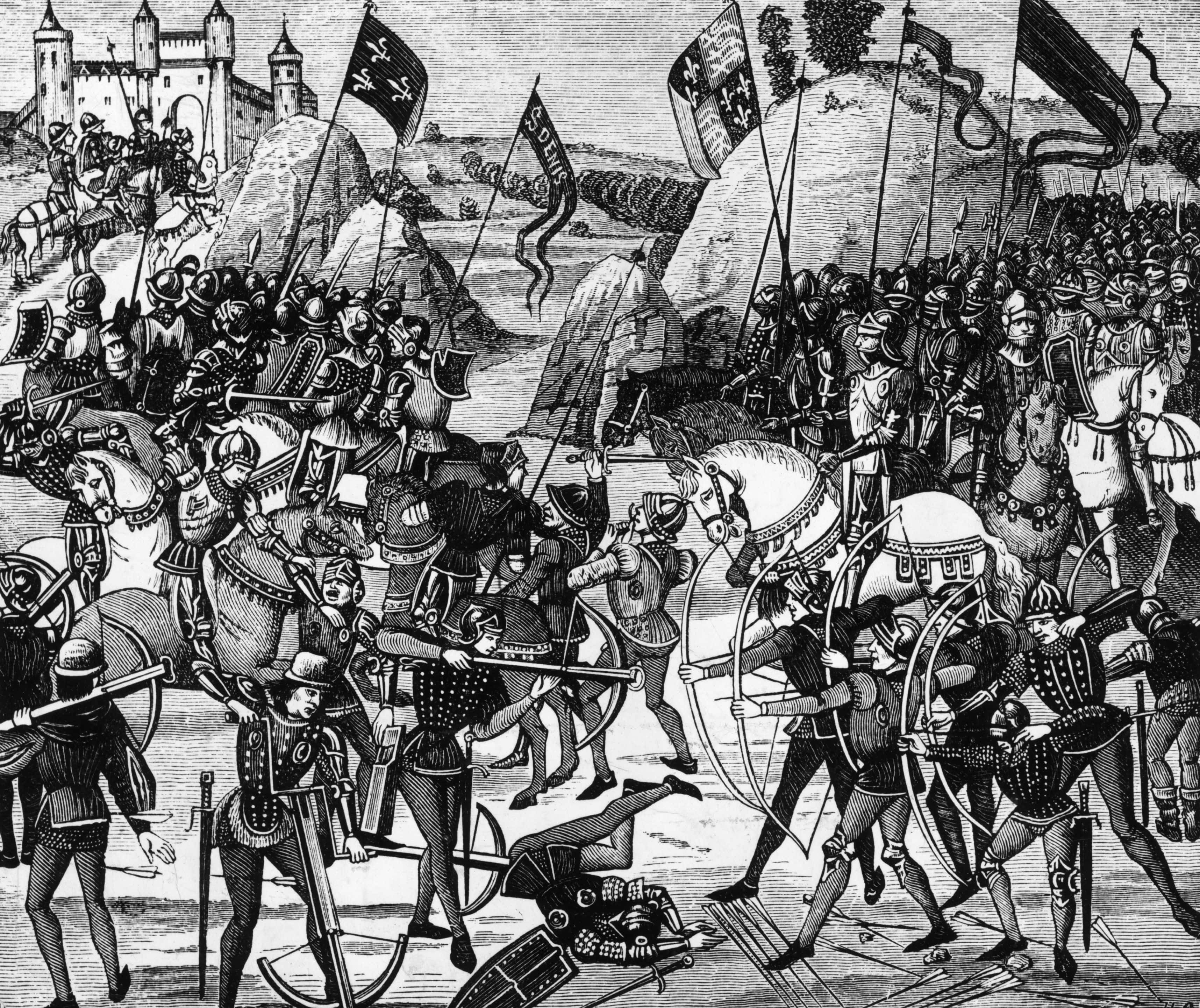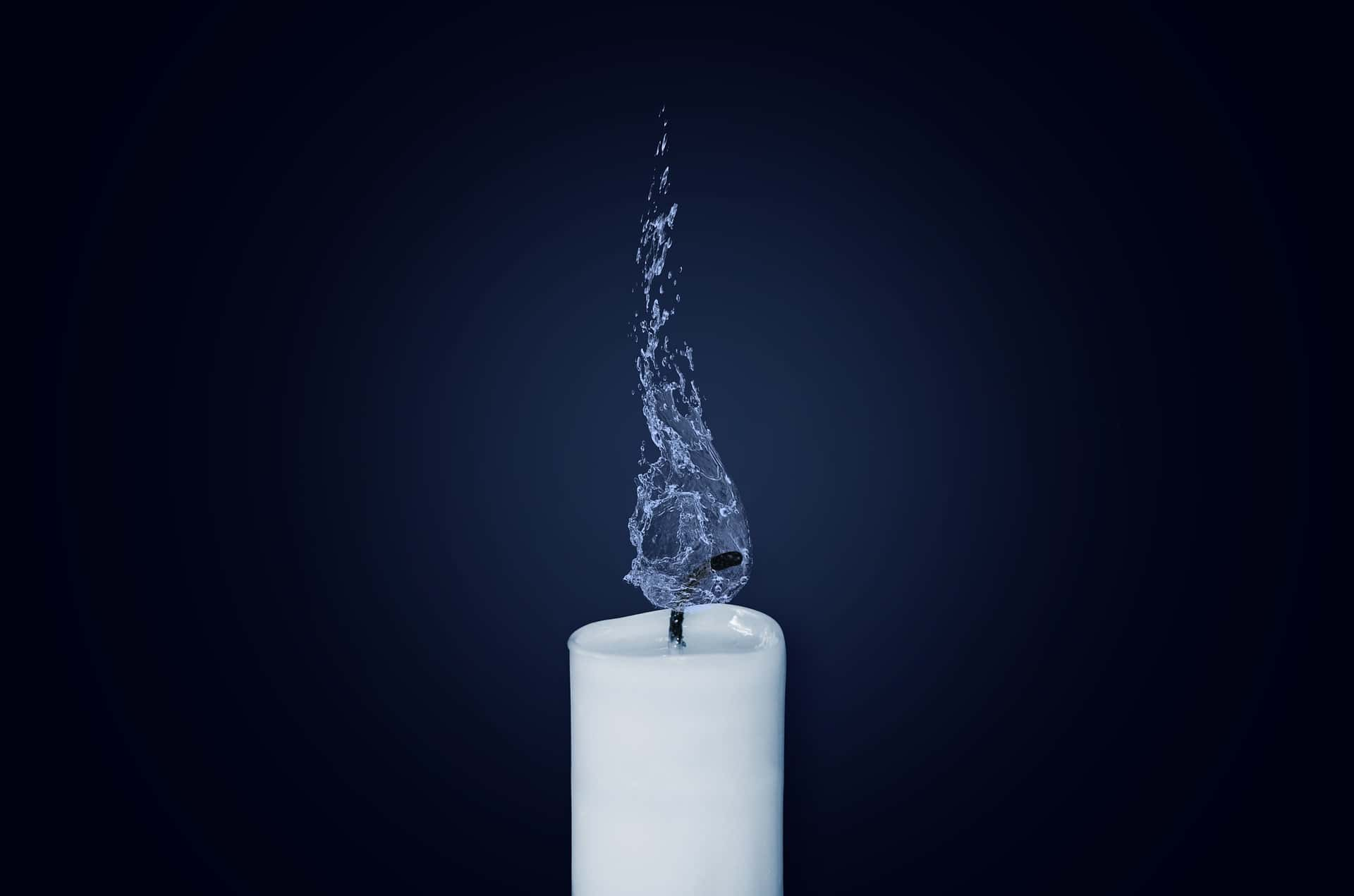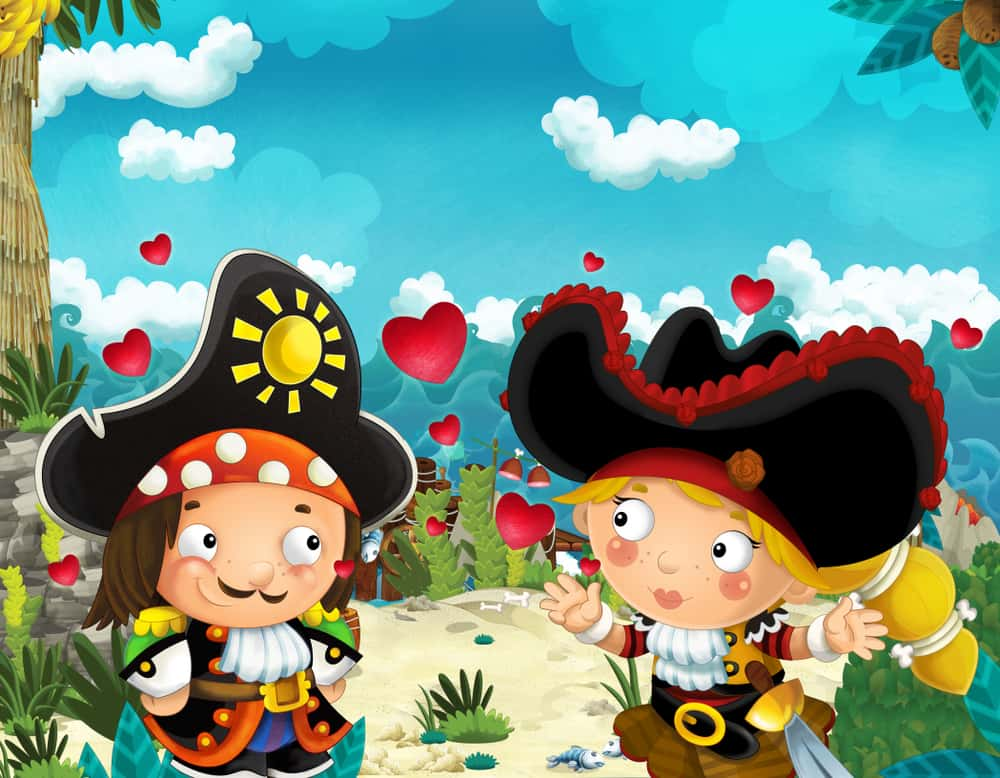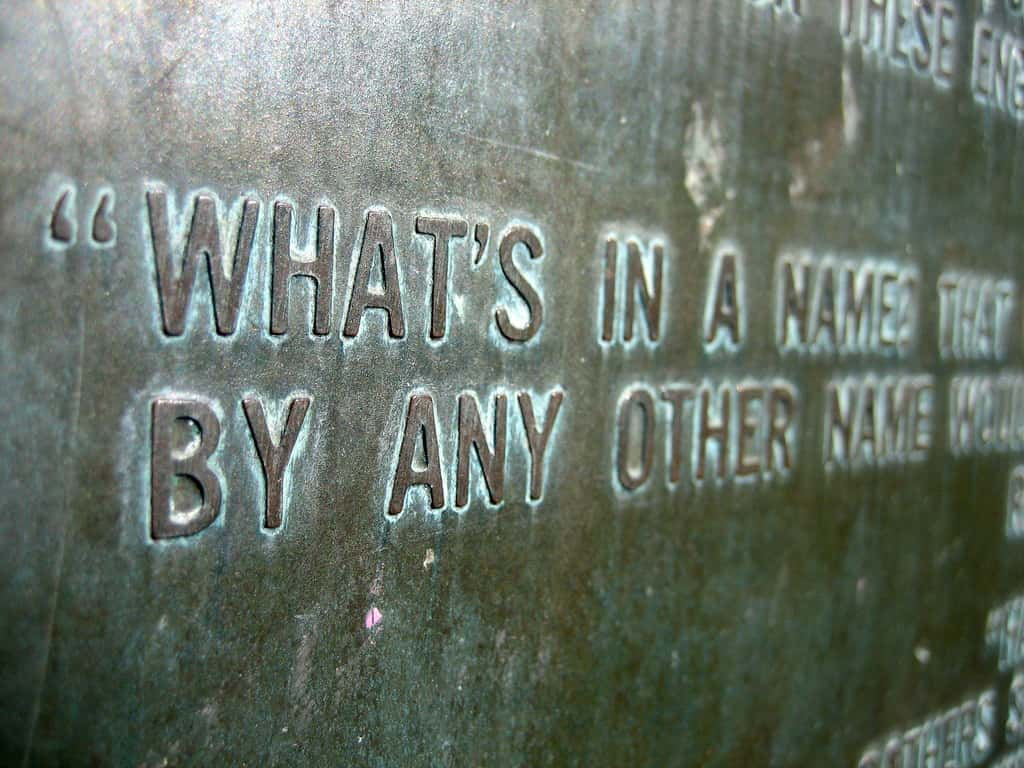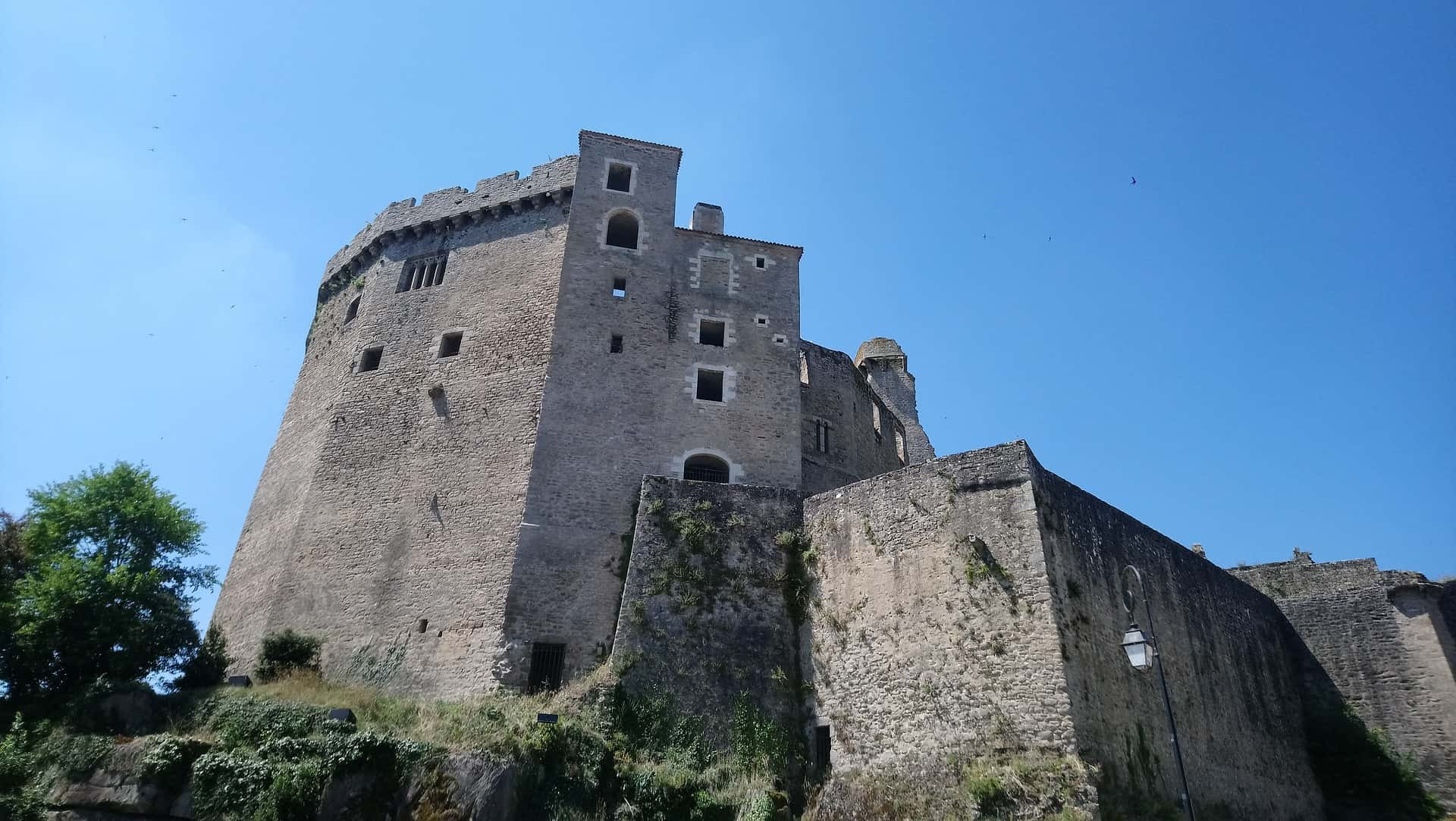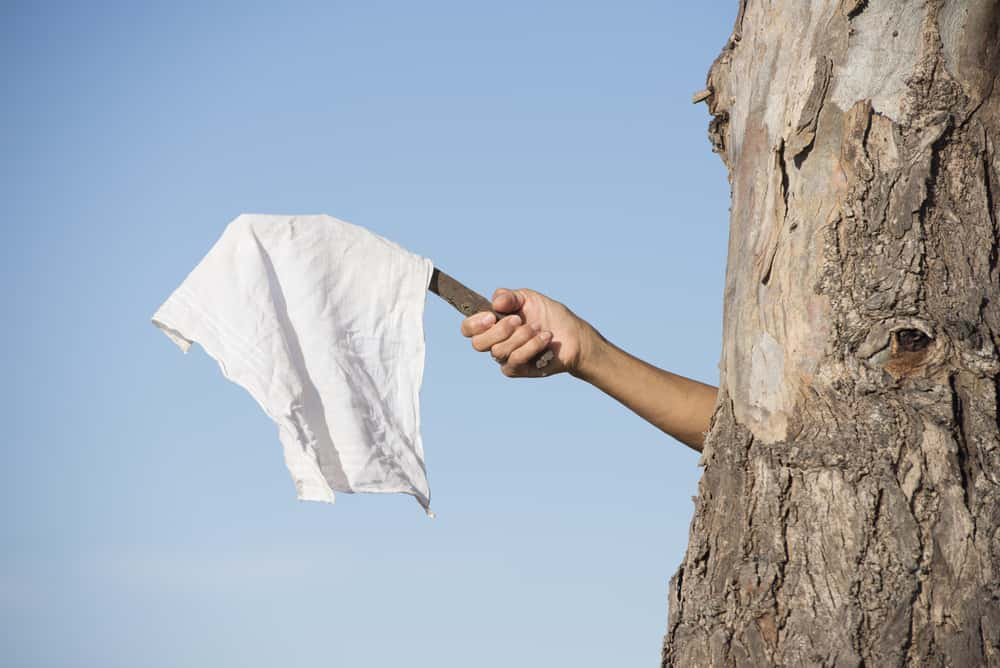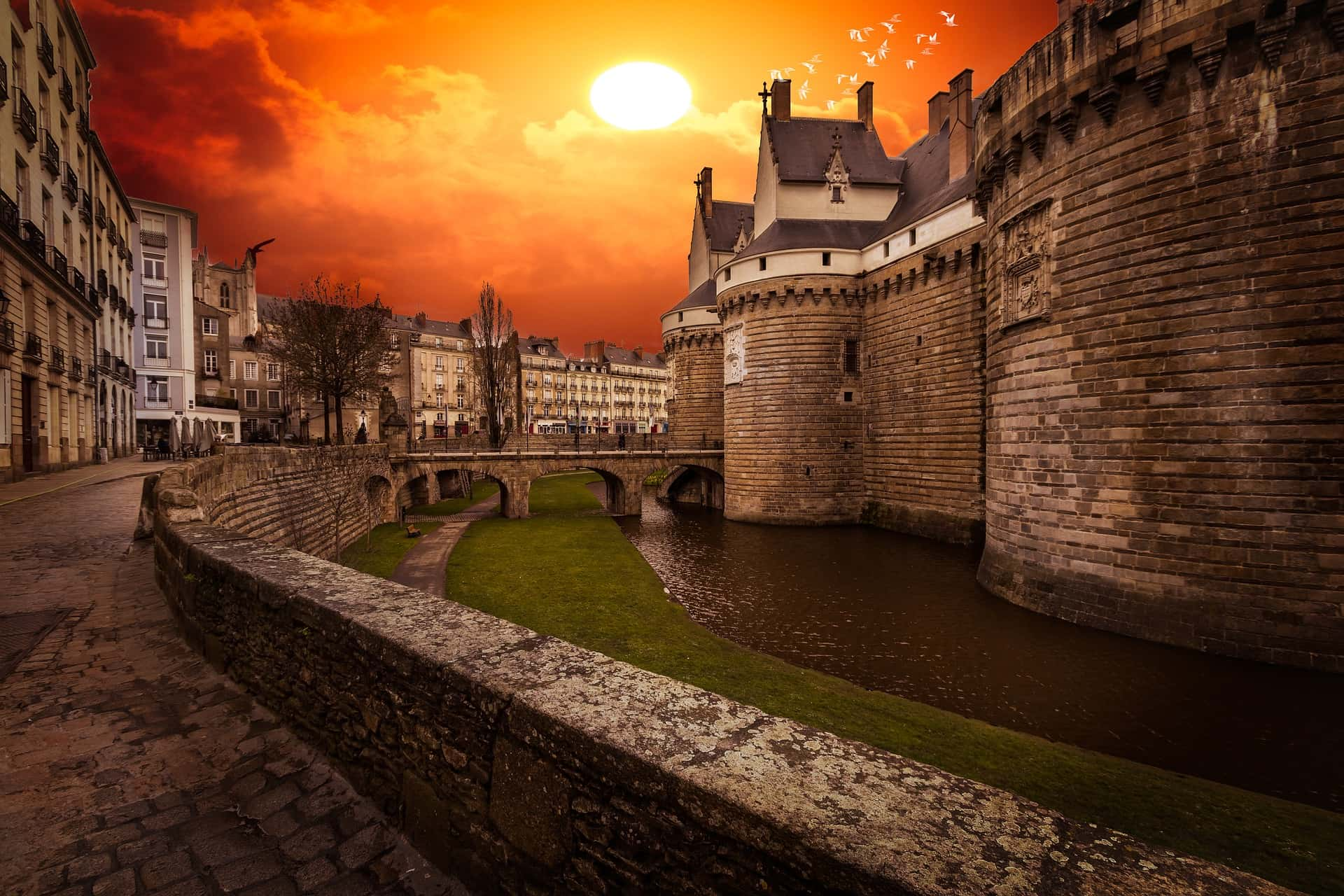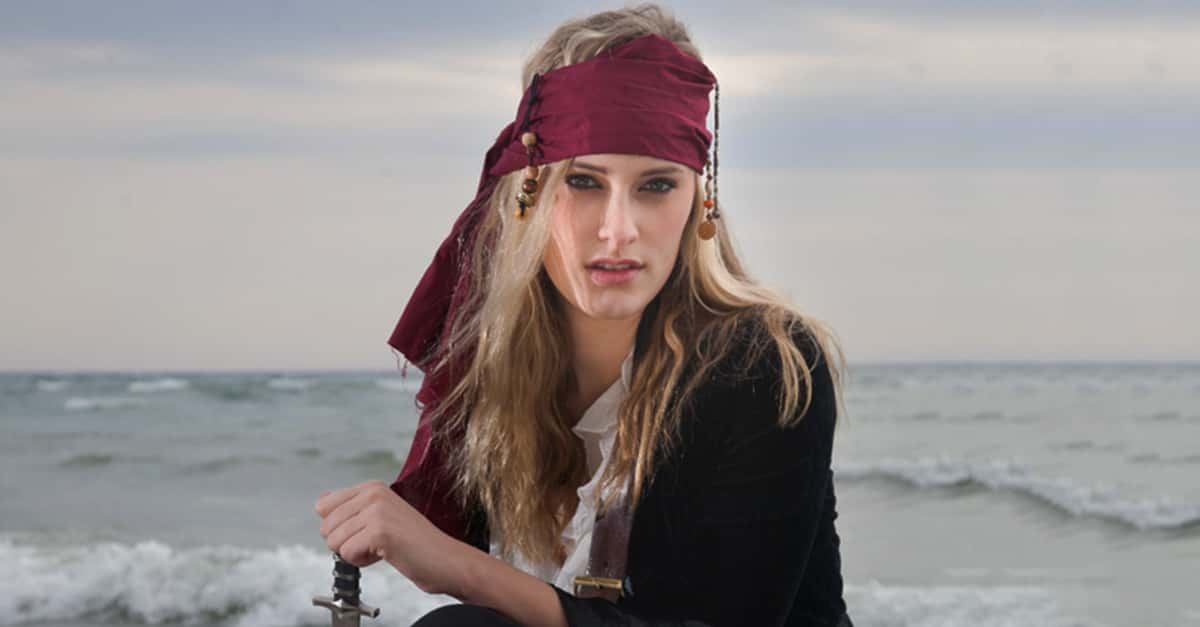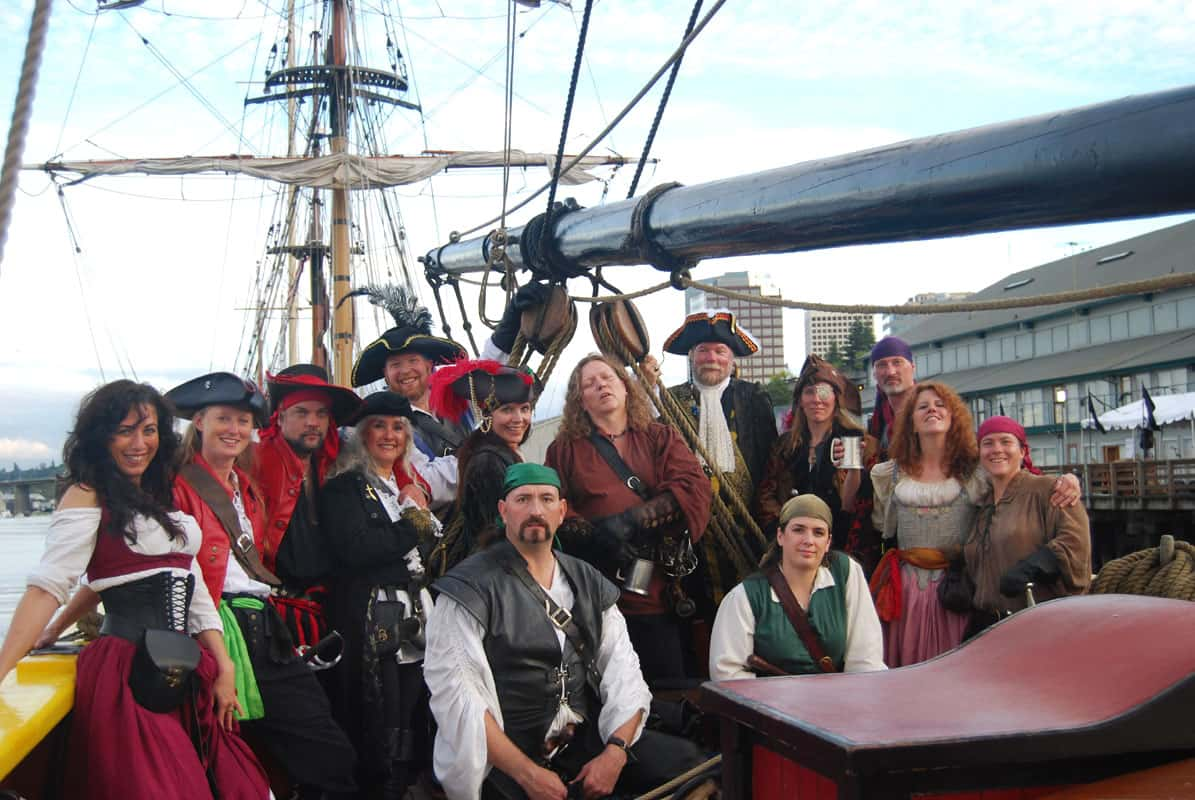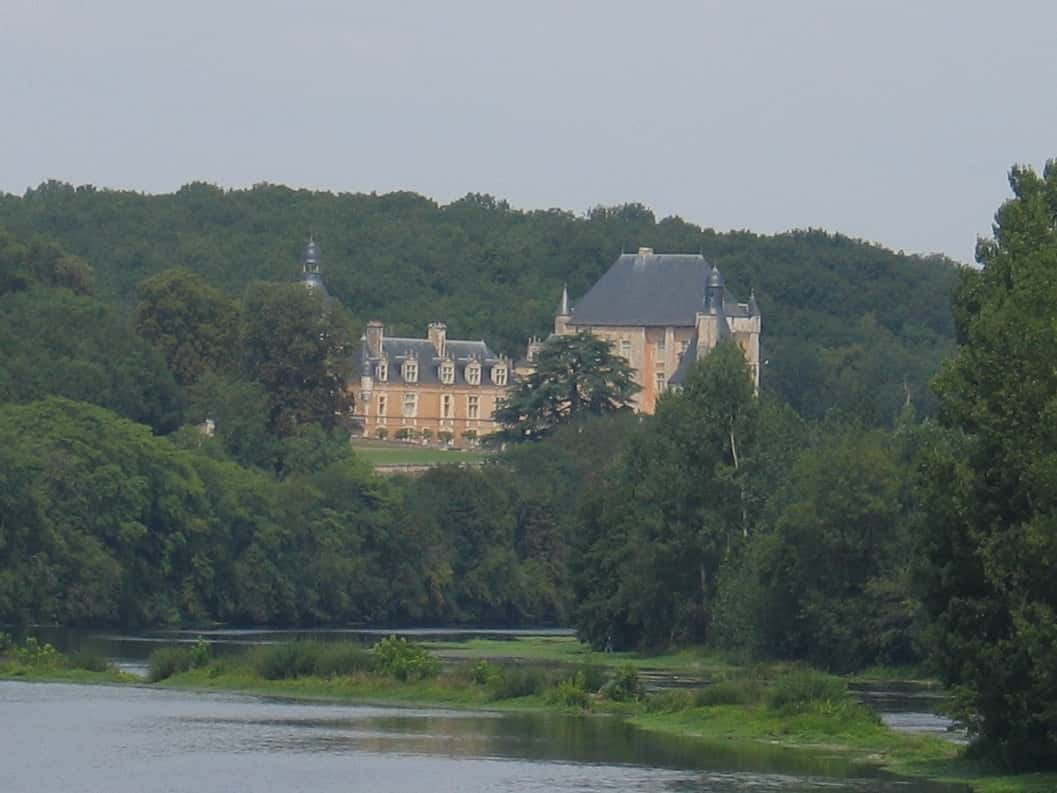It’s safe to say that the Middle Ages produced some rather remarkable figures, both men and women, but one of the people who seems to be overlooked a lot by the history books is Jeanne de Clisson. While France was being torn apart by war, de Clisson and her family were fully involved. Contrary to what was deemed "ladylike," de Clisson would even go to war as a privateer in the English Channel. So what kind of woman was she, you might be asking? Read on to find out about the fearsome Jeanne de Clisson, leader of the Black Fleet.
1. A Fitting Moniker
As a pirate/privateer in the English Channel, de Clisson was known as “The Lioness of Brittany.” She got this nickname because she was known to raid villages or towns and slaughter their populations, leaving only a few survivors to spread the word that de Clisson’s wrath was not to be trifled with.
2. The Time and the Place
The only thing we know about de Clisson’s birth is that she was born in the year 1300 in Belleville-sur-Vie, a commune that lies in what is now the French province of Brittany.
3. Silver Spoon in my Mouth
In case you thought that Elizabeth Swann’s character in Pirates of the Caribbean was too unbelievable, the privateer de Clisson was born into a noble family. Her parents were Maurice Montaigu and Letice de Parthenay.
 Pirates of the Caribbean: At World
Pirates of the Caribbean: At World
4. Starting Early
Back in the 14th century, the short lifespan of the average person meant that people started adulting at an appallingly young age. This was the same situation for de Clisson. At the age of 12, she was married to Geoffrey de Châteaubriant VIII, a 19-year old nobleman in Brittany.
5. Joining the Fray
During de Clisson’s life, Brittany was a duchy which was connected to the Kingdom of France. However, France was hardly the nation that it is today. The English kings of the time were descended from Norman nobility, and thus claimed ownership of French soil. The rivalry of the English and French kings resulted in a series of horrific conflicts known collectively as the Hundred Years War. As you’ll see, de Clisson was very much involved in the fighting.
6. Out with the Old, in with the New
In 1326, de Clisson’s first husband died. They’d had two children together when de Clisson was still a teenager. De Clisson quickly remarried, to Guy de Penthièvre, less than two years later. It's believed she made this match in order to support her two young ones.
7. Dodged a Bullet!
Unfortunately for de Clisson, this second marriage was annulled by the Pope in 1330, thanks to some meddling by the family of her new husband's first wife. Ironically, Guy of Penthièvre would die shortly after getting married yet again.
8. Over a Dozen Years? Sounds Like Real Love!
The same year that de Clisson’s second marriage was annulled, she got married for a third time, to the man who would give her the surname by which she is known. This man was Olivier de Clisson, the fourth person in his family to hold that name. He would be married to de Clisson for around thirteen years and they would produce five children together.
9. The War at Home
One specific reason why de Clisson and her family became involved in the Hundred Years War was because of the Breton War of Succession. In Brittany, a conflict arose over who was in charge of the region. The two claimants were Charles de Blois and John of Montfort. The French and English both exploited this conflict so that they could forward their own agendas. The English backed the House of Montfort, while the French supported the House of Blois.
10. Which Side was Iron Man and Which Side was Captain America?
Speaking of that Breton war going on during de Clisson’s life, she and her husband’s family weren’t above picking sides. They mostly sided with Charles de Blois and his cause, but de Clisson’s brother-in-law, Amaury, would buck the trend and side with Montfort instead.
11. Was Her Last Name Snow or Sand?
Of the five children that de Clisson had with her third husband, her eldest child was named Isabeau. Allegedly, she was born out of wedlock, but she was still married into the French nobility. Her son, Jean de Rieux, became a Marshal of France.
12. I Existed!
It has been argued frequently that such a figure as de Clisson couldn’t possibly have existed. A swashbuckling, merciless pirate bent on revenge, and a woman to boot? No way...yet there are several historical sources which confirm her existence. These include several historical chronicles, French court records listing her as a traitor, and even the 1347 Treaty of Calais, which named de Clisson as an English ally.
13. Makes for a Good Story!
In the 19th century, de Clisson was the subject of a French book titled Jeanne de Belleville. Written by Emile Pehant, the story isn't explicitly about de Clisson, but the author borrowed many details from the legend of the Lioness of Brittany.
14. Who Said War was for the Young?
Interestingly, despite being known for taking up arms against her enemies (more on that later), de Clisson didn’t do so until she was already in her early 40s. Talk about a late bloomer!
15. Died for a Town
One of the important battles of the War of the Breton Succession was the Battle of La Roche-Derrien. Charles de Blois assembled an army of 5,000 soldiers and mercenaries (his largest during the war) and laid siege to the fortified town of La Roche-Derrien. The siege hoped to draw out the small English army left behind in Brittany while the main English force was occupied with besieging Calais. Despite Charles’ superior forces, however, he was defeated in a surprising turn of events and captured by the English. During the battle, de Clisson’s eldest son, Baron Geoffrey de Châteaubriant IX, lost his life.
16. From the Elder to the Younger Sibling
Following the death of her son Geoffrey, de Clisson’s second child from her first marriage, a daughter named Louise, inherited her brother’s title, along with her husband, Guy de Laval.
17. We’ve Had Better Days
In 1342, the English laid a series of sieges against the Breton town of Vannes, whose garrison was commanded by de Clisson’s third husband, Olivier de Clisson. Eventually, the town fell to the besiegers and Olivier was captured, but he was ransomed back to Charles de Blois.
18. Catelyn Stark Sends Her Sympathies
Due to the surprisingly low asking price that the English asked for Olivier, Blois started to believe that the man had betrayed him. In 1343, Olivier was invited to a tournament outside of Brittany, where he was then ambushed, arrested, and put on trial for treason. He was executed in Paris that year, much to the shock of his wife.
19. It’s on Now!
While we’ll never know if de Clisson’s third husband really was a traitor, she was firmly convinced that his death was an act of murder by Charles de Blois and the King of France. The fact that no evidence was presented to prove Olivier's guilt only made her more convinced. Swearing revenge, she sold off the entirety of her husband’s lands and her personal possessions to raise a small army of troops.
20. A Mother’s Worst Nightmare
Tragically, of de Clisson’s seven children, only two of them were confirmed to have outlived her. She lived long enough to bury four of them, while it's a mystery as to when her youngest child, a daughter named also named Jeanne, passed away.
21. The Blood of Angry Men!
Since she was attacking her former allies anyway, it made sense for de Clisson to go whole hog and switch sides. The English and their Breton allies were only too happy to supply her, which led to de Clisson taking to the sea. She formed a small fleet of ships that eventually came to be known as the Black Fleet, for the color that the wood was painted. They were also decked out with red sails, in case anyone was confused by de Clisson’s vengeful purpose.
22. Golden Child
Arguably the most successful of de Clisson’s children was her son, Olivier. Following the death of his father, the junior Olivier would become immersed in military life. He was reportedly known as “The Butcher” (and we can assume it wasn’t because of any trades that he learned beyond killing people in battle).
23. Career Soldier
Olivier Jr. was present for many important moments in the Hundred Years’ War, siding with both the English or the French at different points in his life. He would rise high in the ranks, even to the position of Constable of France. Despite his violent reputation, the Butcher managed to live a very long life, finally dying in 1407 at the age of 71.
24. Clash of Kings
In 1346, an English army led by King Edward III would engage a much larger French force led by King Philip VI at the Battle of Crecy. While we’d like to say that de Clisson was directly involved in the battle, her role was less active than it normally would have been. She used her fleet of ships to ferry supplies to the starving English army.
25. The Iron Lady of Brittany
In 1359, de Clisson died of unknown causes in Hennebont, Brittany. She was 58 or 59 years old, an astonishing age for anyone in the Middle Ages. Keep in mind that she would also have outlived the worst of the Black Death, making her survival to nearly 60 a downright miracle!
26. Fourth Time’s the Charm
In 1356, de Clisson was married a fourth time, this time to an Englishman, Sir Walter Bentley. Like de Clisson, Bentley had served valiantly on the side of the English during the Hundred Years’ War. The two of them retired to Brittany for the rest of de Clisson’s life.
27. “Wrath of Jeanne” was Too On-The-Nose
In case anyone was confused by de Clisson’s intent when she outfitted a small fleet of ships, she named her flagship My Revenge. It’s safe to say that this was the most fitting name for a ship in French history!
28. No Rest for the Lioness
Though she died in Hennebont, it’s long been said that de Clisson’s ghost made the trip back to Clisson Castle, where she still walks the halls to this day.
29. An End to the Conflict
Though de Clisson didn’t live to see it, her one wish in life ended up being fulfilled. Charles de Blois was killed in battle in 1364, and the Montfort side ended up succeeding in its quest to rule the Duchy of Brittany.
30. Love Match
Unlike most marriages at the time, it seems that Olivier and Jeanne de Clisson married for love—which made Olivier’s betrayal and execution all the more painful.
31. A Grim Reminder
After Olivier de Clisson was executed, his body was put in a Gibbet in Paris, while his head was sent to Nantes. Filled with grief and rage, Jeanne took her sons to Nantes to show them their father’s head and remind them that he’d been murdered by Charles de Blois and the King of France.
32. It’s Almost Poetic
In total, de Clisson’s time as a vengeful pirate would last 13 years. We’d like to think that she pirated one year for every year that she’d been married to her third husband, for whom she’d turned rogue in the first place. It really seems too fitting to dismiss!
33. An Axe to Grind
According to legend, the few survivors of the Black Fleet's massacres always told the same story. The pirates would board French ships and slaughter nearly everyone inside, while de Clisson herself would personally behead any nobles with her wicked ax—a fitting revenge for her husband’s grim demise.
34. Spread the Word!
Before all the piracy, the very first of de Clisson’s actions in revenge for her third husband’s execution was an attack on the castle of Touffou. Loyal to Charles de Blois, the castle resisted de Clisson’s assault but eventually fell. On de Clisson’s orders, all but one of the castle’s population was massacred.

